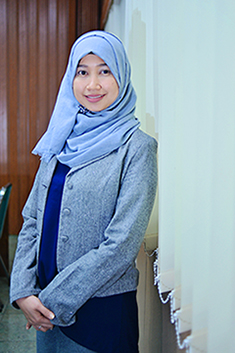Potential Combination of Dayak onion Eleutherine palmifolia L. and Chrysanthemum flower Chrysanthemum indicum L. as Anti-aging: Network Pharmacology Approach
Downloads
Background: An anti-aging agent is a preparation or product used to inhibit skin aging. Aging occurs because of cell damage caused by free radicals. Therefore, anti-aging agents, which contain antioxidants to inhibit oxidative stress caused by free radicals, are needed. Dayak onion (eleutherine palmifolia (L) Merr.) and chrysanthemum flowers (Chrysanthemum indicum L.) have high antioxidant content, which has the potential to inhibit aging. Objective: To determine the anti-aging potential of dayak onion and chrysanthemum flower compounds Methods: Network pharmacology was performed using GeneCards (https://www.genecards.org) to obtain target genes, Cytoscape v3.10.1 software (https://cytoscape.org), DisGeNET (https://www.disgenet.org), STRING (https://www.string-db.org/), and the Kyoto Encyclopedia of Genes and Genomes (KEGG) PATHWAY (https://www.genome.jp/kegg/pathway.html). Results: Based on Network Pharmacology, dayak onion and chrysanthemum flowers showed that 14 of the 200 target proteins were involved in biological processes and signaling pathways for premature aging syndrome. Conclusion: The combined compound from dayak onion and chrysanthemum flower has anti-aging activity due to seven bioactive components in the hydroxycinnamic acid group. This compound influences biological processes and longevity by regulating the CAD, SIRT1, and TP53 signaling pathways. Therefore, the combination of dayak onion and chrysanthemum flowers has potential as an anti-aging agent.
Bastianini, M., Faffa, C., Sisani, M., & Petracci, A. (2018). Caffeic acid-layered double hydroxide hybrid: A new raw material for cosmetic applications. Cosmetics, 5(3). https://doi.org/10.3390/COSMETICS5030051
Chen, C., Zhou, M., Ge, Y., & Wang, X. (2020). SIRT1 and aging related signaling pathways. In Mechanisms of Ageing and Development (Vol. 187). Elsevier Ireland Ltd. https://doi.org/10.1016/j.mad.2020.111215
Chen, S., Liu, J., Dong, G., Zhang, X., Liu, Y., Sun, W., & Liu, A. (2021). Flavonoids and caffeoylquinic acids in Chrysanthemum morifolium Ramat flowers: A potentially rich source of bioactive compounds. Food Chemistry, 344. https://doi.org/10.1016/j.foodchem.2020.128733
Cizmarova, B., Hubkova, B., Bolerazska, B., Marekova, M., & Birkova, A. (2020). Caffeic acid: A brief overview of its presence, metabolism, and bioactivity. Bioactive Compounds in Health and Disease, 3(4), 74–81. https://doi.org/10.31989/bchd.v3i4.692
Dutta, R. K., Lee, J. N., Maharjan, Y., Park, C., Choe, S. K., Ho, Y. S., Kwon, H. M., & Park, R. (2022). Catalase-deficient mice induce aging faster through lysosomal dysfunction. Cell Communication and Signaling, 20(1). https://doi.org/10.1186/s12964-022-00969-2
Firdayeni, I. G. A. R. M., & Sari, P. M. N. A. (2022). Review Artikel Potensi Limbah Kulit Kopi (Coffea sp.) sebagai Bahan Baku pada Produk Kosmetik Anti-Aging. Prosiding Workshop dan Seminar Nasional Farmasi (Vol. 1, Issue 1).
Grabowska, W., Sikora, E., & Bielak-Zmijewska, A. (2017). Sirtuins, a promising target in slowing down the ageing process. Biogerontology,18(4)447–476. ds. https://doi.org/10.1007/s10522-017-9685-9
Hartanto, R., Fitri, S. R., Kawiji, K., Prabawa, S., Sigit, B., & Yudhistira, B. (2021). Analisis Fisik, Kimia dan Sensoris Teh Bunga Krisan Putih (Chrysanthemum morifolium Ramat.) dengan Pengeringan Kabinet. Agrointek : Jurnal Teknologi Industri Pertanian, 15(4), 1011–1025. https://doi.org/10.21107/agrointek.v15i4.10531
Hilal, N., Syahrir, A., Mochamad Afendi, F., Susetyo, B., Mochamad, F., & Program, A. (2016). Efek Sinergis Bahan Aktif Tanaman Obat Berbasiskan Jejaring Dengan Protein Target, Jurnal Jamu Indonesia, 1(1).
Kamarudin, A. A., Sayuti, N. H., Saad, N., Razak, N. A. A., & Esa, N. M. (2021). Eleutherine bulbosa (Mill.) urb. bulb: Review of the pharmacological activities and its prospects for application. International Journal of Molecular Sciences,22(13). https://doi.org/10.3390/ijms22136747
Kumalasari, E., & Prihandiwati, E. (2019). Formulasi Krim Antiaging Ekstrak Daun Bawang Dayak dengan Emulgator Anionik dan Nonionik. Jurnal Insan Farmasi Indonesia, 2(2), 222–230. https://doi.org/10.36387/jifi.v2i2.386
Lin, L. Z., & Harnly, J. M. (2010). Identification of the phenolic components of chrysanthemum flower (Chrysanthemum morifolium Ramat). Food Chemistry, 120(1), 319–326. https://doi.org/10.1016/j.foodchem.2009.09.083
Ma, D., & Wako, Y. (2017). Evaluation of phenolic compounds and neurotrophic/neuroprotective activity of cultivar extracts derived from Chrysanthemum morifolium flowers. Food Science and Technology Research, 23(3), 457–467. https://doi.org/10.3136/fstr.23.457
Marlina, A., & Widiastuti, E. (2021). Studi Awal Pembuatan Bio-Insektisida dari Bunga Krisan (Chrysantemum Morrifolium). Prosiding The 12th Industrial Research Workshop and National Seminar. 12, 128-160.
Mokoginta, R. V, Simbala, H. E. I., & Mansauda, K. L. R. (2020). Uji Aktivitas Antioksidan Ekstrak Etanol Bulbus Bawang Dayak (Eleutherine americana Merr) dengan Metode DPPH (1,1-Diphenyl-2-Picrylhydrazyl) Antioxidant Activity Test of Ethanol Extracts Dayak Onion Bulbs (Eleutherine americana Merr) with DPPH Method (1,1-Diphenyl-2-Picrylhydrazyl). Phamacon 9(3).
Muti’ah, R., Listiyana, A., Nafisa, B. B., & Suryadinata, A. (2020). Kajian Efek Ekstrak Umbi Bawang Dayak (Eleutherine palmifolia (L.) Merr) sebagai Antikanker. Jurnal of Islamic Pharmacy,5(2).
Nailufa, Y., & Najih, Y. A. (2020). Formulasi Krim Epigallocatechin gallate Sebagai Anti Aging. Journal of Pharmacy and Science, 5(2), 81–85. https://doi.org/10.53342/pharmasci.v5i2.186
Narko, T., Permana, B., Prasetiawati, R., Soni, D., Khairiyah, F., Au, L., & Sastranegara, L. H. (2017). Molecular Docking study of Bulb of Bawang Dayak (Eleutherine Palmifolia (L) Merr ) Compound as Anti Cervical Cancer. Jurnal Ilmiah Farmako Bahari, 8(2), 1–14. http://PubChem.ncbi.nlm.nih.gov
Novaryatiin, S., Ramli, A., Dian Ardhany, S., Pengajar Program Studi DIII Farmasi, D., Ilmu Kesehatan, F., Muhammadiyah Palangkaraya, U., & Program Studi DIII Farmasi, M. (2019). Uji Daya Hambat Ekstrak Etanol Bawang Dayak (Eleutherine bulbosa (Mill.) Urb.) terhadap Bakteri Staphylococcus aureus. Jurnal Surya Medika,4(2).
Permatasari, G. W., Atho’illah, M. F., & Putra, W. E. (2021). Target protein prediction of Indonesian jamu kunyit asam (Curcumin-tamarind) for dysmenorrhea pain reliever: A network analysis approach. Jurnal Kedokteran Dan Kesehatan Indonesia. https://doi.org/10.20885/jkki.vol12.iss3.art7
Pramiastuti, O., Ika, D., Solikhati, K., Suryani, A., S1, P., Stikes, F., Mandala, B., & Slawi, H. (2021). Aktivitas Antioksidan Fraksi Umbi Bawang Dayak (Eleutherine bulbosa (Mill.) Urb) dengan Metode DPPH (1,1-difenil-2-pikrilhidrazil) Antioxidant Activity of Fractions Dayak Onion Bulbs (Eleutherine bulbosa (Mill.) Urb) BY DPPH(1,1-diphenyl-2-picrylhidrazil) Method. Jurnal Wiyata, 8(1), 55–65.
Puspita, D., Nugroho, P., Titania, M. C., Putri, A., Pangan, E. T., Kedokteran, F., Kesehatan, I., Kristen, U., Wacana, S., Kartini, J. L., & 11, N. (2023). Optimizing the Drying Temperature of Bloom Tea Using Oven and Microwave for Conservation of Pigment and Antioxidant Content. Science, Technology and Management Journal, 3(1), 10–14. https://doi.org/10.26623/jtphp.v13i1.1845.kodeartikel
Qomariasih, N., Susetyo, B., & Afendi, F. M. (2016). Analisis Gerombol Simultan dan Jejaring Farmakologi antara Senyawa dengan Protein Target pada Penentuan Senyawa Aktif Jamu Anti Diabetes Tipe 2. Jurnal Jamu Indonesia, 1(2).
Qureshi, M. A., & Javed, S. (2022). Investigating binding dynamics of trans resveratrol to HSA for an efficient displacement of aflatoxin B1 using spectroscopy and molecular simulation. Scientific Reports, 12(1). https://doi.org/10.1038/s41598-022-06375-5
Rahmadiani, N. F., & Hasanah, A. N. (2019). Formulasi dan Evaluasi Sediaan Anti Aging dari Ekstrak Tumbuhan. Farmasetika.Com (Online), 4(4). https://doi.org/10.24198/farmasetika.v4i4.23068
Rosyadah, M., Afendi, F. M., & Kusuma, W. A. (2017). Penguraian Mekanisme Kerja Jamu dengan Menggunakan Analisis Graf Tripartit pada Jejaring Senyawa-Protein-Penyakit. Jurnal Jamu Indonesia, 2(1). http://pharmgkb.org
Saputra, D. E., Handayani, N., & Wartono, M. W. (2016). Isolation and Identification of Β-Sitosterol and Stigmasterol Mixture From Root Bark of Slatri (Calophyllum soulattri Burm. f). ALCHEMY Jurnal Penelitian Kimia, 10(1), 87. https://doi.org/10.20961/alchemy.v10i1.14
Sembiring, E. K. D., Sulistyaningsih, E., & Shintiavira, H. (2021). Pengaruh Berbagai Konsentrasi Giberelin (GA3) terhadap Pertumbuhan dan Hasil Bunga Krisan (Chrysanthemum morifolium L.) di Dataran Medium. Vegetalika, 10(1), 44. https://doi.org/10.22146/veg.47856
Siswanto, F. M., & Kartiko, B. H. (2017). Aplikasi Teknologi Crispr/Cas9 Dalam Anti-Aging Medicine. Jurnal Media Sains, 1(2), 50–56.
Tjandrawinata, R. R., Amalia, A. W., Tuna, H., Saidi, V. N., & Tan, S. (2022). Molecular Mechanisms of Network Pharmacology-Based Immunomodulation of Huangqi (Astragali Radix). Jurnal Ilmu Kefarmasian Indonesia, 20(2). https://www.ncbi.nlm.nih.gov/gene/
Trist, B. G., Hilton, J. B., Hare, D. J., Crouch, P. J., & Double, K. L. (2021). Superoxide Dismutase 1 in Health and Disease: How a Frontline Antioxidant Becomes Neurotoxic. Angewandte Chemie - International Edition, 60(17), 9215–9246). https://doi.org/10.1002/anie.202000451
Wahdaningsih, S., Rizkifani, S., Untari, E. K., & Rinaldi, W. (2023). Effect of Drying Method on Levels of Antioxidant Activity, Total Flavonoid Levels, and Total Phenol Levels in Ethanol Extract of Bawang Dayak (Eleutherine americana) Leaves. Majalah Obat Tradisional, 28(1), 37–39. https://doi.org/10.22146/mot.80085
Wang, Y., Sun, J., Ma, D., Li, X., Gao, X., Miao, J., & Gao, W. (2019). Improving the contents of the active components and bioactivities of Chrysanthemum morifolium Ramat.: The effects of drying methods. Food Bioscience, 29, 9–16. https://doi.org/10.1016/j.fbio.2019.03.003
Wanita, Y. P. (2022). Potensi Produk Samping Budidaya Krisan sebagai Minuman Fungsional: Senyawa Kimia dan Nilai Tambahnya Potential Side Products of Cultivation of Chrysanthemum as a Functional Beverage: Chemical Compounds And Its Value Added. Jurnal Pertanian Agros, 24(2).
Xu, J., Su, X., Burley, S. K., & Zheng, X. F. S. (2022). Nuclear SOD1 in Growth Control, Oxidative Stress Response, Amyotrophic Lateral Sclerosis, and Cancer. Antioxidants,11(2). https://doi.org/10.3390/antiox11020427
Yuan, H., Jiang, S., Liu, Y., Daniyal, M., Jian, Y., Peng, C., Shen, J., Liu, S., & Wang, W. (2020). The flower head of Chrysanthemum morifolium Ramat. (Juhua): A paradigm of flowers serving as Chinese dietary herbal medicine. Journal of Ethnopharmacology, 261https://doi.org/10.1016/j.jep.2020.113043
Zhang, J., Liu, X., Pan, J., Zhao, Q., Li, Y., Gao, W., & Zhang, Z. (2020). Anti-aging effect of brown black wolfberry on Drosophila melanogaster and D-galactose-induced aging mice. Journal of Functional Foods, 65. https://doi.org/10.1016/j.jff.2019.103724
Zhou, H., Zhang, X., Li, B., & Yue, R. (2023). Fast and efficient identification of hyaluronidase specific inhibitors from Chrysanthemum morifolium Ramat. using UF-LC-MS technique and their anti-inflammation effect in macrophages. Heliyon, 9(2). https://doi.org/10.1016/j.heliyon.2023.e13709
Zhou, Z., Chen, B., Chen, S., Lin, M., Chen, Y., Jin, S., Chen, W., & Zhang, Y. (2020). Applications of Network Pharmacology in Traditional Chinese Medicine Research. Evidence-based Complementary and Alternative Medicine, 2020. https://doi.org/10.1155/2020/1646905
Copyright (c) 2024 JURNAL FARMASI DAN ILMU KEFARMASIAN INDONESIA

This work is licensed under a Creative Commons Attribution-NonCommercial-ShareAlike 4.0 International License.
1. The copyright of this journal belongs to the Editorial Board and Journal Manager with the author's knowledge, while the moral right of the publication belong to the author.
2. The formal legal aspect of journal publication accessibility refers to the Creative Commons Attribution-Non-Commercial-Share Alike (CC BY-NC-SA), which implies that the publication can be used for non-commercial purposes in its original form.
3. Every publication (print/electronic) is open access for educational, research, and library purposes. In addition to the objectives mentioned above, the editorial board is not responsible for copyright infringement


.jpg)















